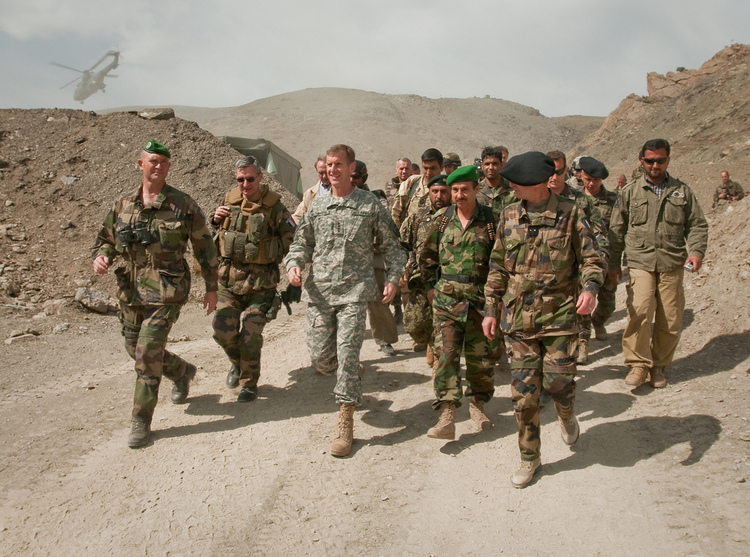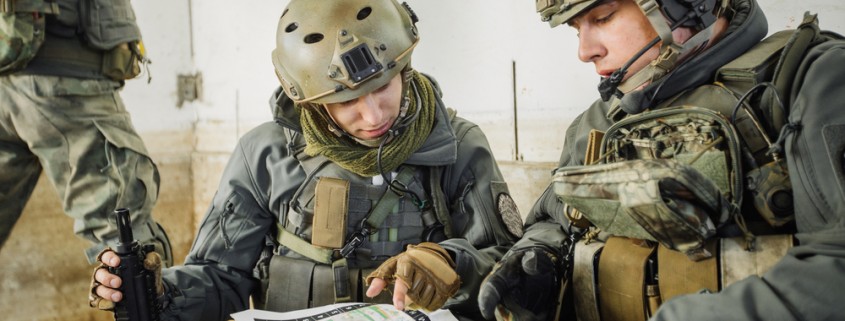How a “Team of Teams” Empowers Everyone
BLOG, Planning, StrategyRomanticized notions of crisis management often involve a dose of nobly bombastic leadership. Picture a high-ranking renegade, thinking clearer and harder than his panicked crew to swoop in and turn the ship around without hesitation, and with miraculous timing. It’s the stuff of legend.
However, in the wonderfully intelligent book Team of Teams: New Rules of Engagement For a Complex World, author Stanley McChrystal suggests that these tactics stay in Hollywood. Taking command of the Joint Special Operations Task Force of the US Military on 2004, General McChrystal quickly noticed that conventional tactics of hierarchical command were failing his country. Against a decentralized and highly adaptive opponent, all the advantages of numbers, resources, and training America had were of no advantage in the face of a looming inability to improvise.
In the heart of a damning war, the general gave the Task Force a re-haul. Needing to match the speed and flexibility of Al Qaeda without sacrificing the behemoth size of the US Military, the now-retired general created the “team of teams” system. The hierarchy was flattened, transparency was emphasized, and decision-making was decentralized among three continents via strong technological prowess.
Al Qaeda was pushed back.
The “team of teams” structure is a loose concept that has already established itself through several forms as a strong trend in modern business. Zappos is changing course to the Holacracy and moving through with open sails. More and more startups are ditching conventional trickle down decision-making in exchange for collaboration.
And that is just the point. Collaboration trumps command.

General McChrystal (center) leads a visit to Kapisa Province, Afghanistan.
In the most ironic way, Al Qaeda has taught us that small, decentralized teams united by a common goal will outpace stiff hierarchy every time, as transparent, lateral communication is endlessly more efficient than downward demands. As McChrystal insists, the purpose of Navy BUD/S (Basic Underwater Demolition/SEAL) training “is not to produce super soldiers. It is to produce super teams”.
The thoughtfulness continues. “We needed to enable a team operating in an interdependent environment to understand the butterfly-effect ramifications of their work and make them aware of the other teams with whom they would have to cooperate in order to achieve strategic—not just tactical—success”.
This perspective is deeply explored throughout the book, including several mind-bending testaments to the power of collaboration. In particular, Team of Teams combs through the story of Dr. E. J. Caterson, who after a ten-hour operation was intercepted from the end of the day by a hospital resident, saying “a bomb just went off”. It was April 15, 2013. The Boston Marathon.
Caterson’s team and others converged in the emergency room. “No one had any sense of what the scope of the event was”, he explains, taking half a chapter of the book to reminisce. “As far as we knew, this could be three thousand people”. Trauma surgeons, orthopedic surgeons, and vascular surgeons put their heads together in the heat of the moment to co-devise an immediate plan to treat the incoming patients of critical condition.
One patient in particular comes flying through the doors with mere remnants of a leg. The go-to orthodox method would call for an above-knee amputation and prosthetic limb. That, however, wasn’t good enough for Caterson—or his team of teams.
The medical task force dove in. They took skin grafts from the victim’s leg and back to heal the wound over an interim period. A 22cm and 40cm strip were removed from his back, threaded together by a 2mm-thick blood vessel to make a skin pattern with stitching finer than a human hair. After removing the bone, putting it back in his leg, and soldiering through eight surgeries, their patient recovered with a functioning knee. An amputation would have meant up to a 70% increase in energy output during walking for the rest of his life, leading to early joint failure, cardiovascular issues, and pulmonary issues. “That was a complete deviation from normal practices” Caterson says. “But as a result, that person will be able to run a marathon again”.

Conceptual diagram via Fast Company: http://www.fastcompany.com/3045477/work-smart/goodbye-org-chart
This is the true stuff of legend. In a situation that is almost life and death, neglecting many heads for the command of one would be insanity. Imagine if the vascular surgeons couldn’t communicate with the orthopedic surgeons, or if Caterson could report only to his superior. Decisions would take too long on a single, vertical elevator of reconnaissance, and a lack of collective empowerment would likely inspire the lone play-caller to dodge the risk and resort to conventional tactics, leaving the patient with a completely different quality of life.
Collaboration supports healthy risk-taking. It emphasizes transparency, efficiency, empowerment, and creative solutions. Most of all, collaboration sacrifices authority for agility. Taking a “team of teams” approach like the newly tempting Holacracy can radically change the synergy and internal communication of modern businesses, supporting heightened levels of home-grown trust networks and motivating individuals to contribute. When knowing your actions could have a permeating ripple effect, and not a trajectory fizzling out two floors short of the CEO’s office, everyone becomes empowered.



